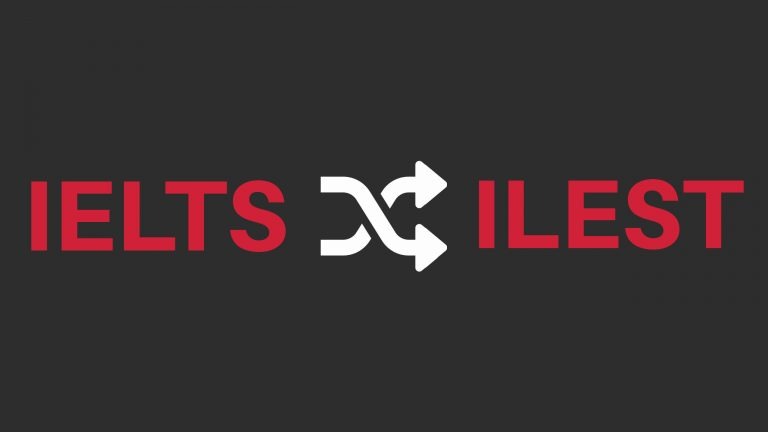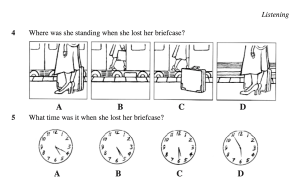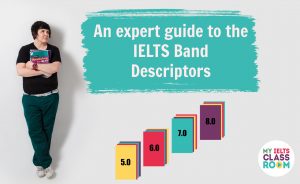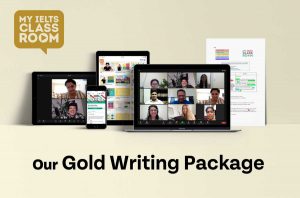
Is the IELTS exam format changing in 2023?
Please do NOT panic! I want to make it clear right at the start of this blog post that there are no major changes happening to the IELTS exam (that I am aware of) in 2023. Cambridge is not adding a new section to the speaking exam, or changing the amount of time that you have for writing, or making the reading passages more difficult. However, some of our students have reported over the last few weeks that some of the exams that they have sat at the start of 2023 have deviated slightly from the current Cambridge book format. Today, Nick and I explain what those changes are and how the IELTS exam format changing in 2023 could affect your IELTS preparation.
Below, you can find a summary of the episode, which includes links to useful materials 🚀
- Subscribe to My IELTS Classroom podcast on Apple podcasts here
- Subscribe to My IELTS Classroom on Google podcasts here
What would it mean for IELTS to change the test format?
There are a number of ways that Cambridge, IDP and the British Council could change the format of the IELTS exam, ranging from integrating the four skills (as the do in TEOFL), to introducing new tasks in the writing and speaking. However, there is little to no chance (in my opinion) that IELTS will do this now or in the future.
Creating a reliable English proficiency test is both difficult and time-consuming. IELTS is already trusted by universities and governments around the world, and changing the format of the test would not only require re-training all the current examiners, but also creating new test materials and teaching books. In short, it would be a massive effort to fix something that is not broken.

However, that is not to say that the test stands still and never changes. Old dinosaurs like me can remember when the listening test used to have nice little illustrations, and the writing prompts sometimes asked you to write “a case” for an argument. And even though today, the test is more or less “fixed” there are still small changes being made all the time.

Take, for example, the topics addressed in the essay questions, which are constantly being updated to include the latest social trends (i.e. having a personal trainer, spending time on smartphones, internet payments, etc). And even the question types seen in the exam are forever evolving, with more and more 2-part and direct questions appearing in recent years – have a listen to Nick and I discussing the essay questions in Cambridge IELTS General Training 17 to learn more about this.
In the main, however, what you are asked to do in the IELTS exam is more or less always the same.
You are asked to listen, read, speak, or write in English, and to respond to particular types of questions that never change. In other words, in the speaking exam in Section 1 you will always be asked to answer short questions about yourself, and in Part 2 to speak on a topic for 1 – 2 minutes, and in Part 3 to answer questions about the world around you. Similarly, in the reading exam, you will be asked to read three passages and answers questions from a fixed range of possible types (T/F/NG, Multiple Choice, Headings, etc)
If IELTS were ever to change these things, you would not read about those changes in a blog post like this. You would read about them on the official IELTS website (and then see the IELTS world go into meltdown!)
Want to know how the examiner will apply the band descriptors when marking your IELTS essay?
Then download a copy of our FREE e-book, which explains how each of the four marking criteria is applied and includes the most common errors made by test-takers. Just click here for your copy.

What could be different, then, in 2023 for IELTS test-takers?
Good question! If we know that the components of IELTS are always the same, then how can there be anything different in 2023? Well, what seems to be happening is that IELTS is deviating slightly from the format that it has been using in the most recent Cambridge IELTS books for reading and listening.
As you probably know, Cambridge IELTS 1 – 17 is a series of books that contain past exam papers. Cambridge publishes one book every year so that test-takers can practice with the most current exam questions, and get a good idea of what to expect in the real exam.
These are the only exam papers that we recommend you practice with.
Yes, you can find many other resources online, but no other exam papers are guaranteed to be the right level and contain no mistakes. Students contact us every week asking for clarification of a specific True/False/Not Given question that has confused them, or an Academic Report that they cannot find the key features for, and 99.9% of the time, when the test paper comes from the Internet, the problem lies in the question itself not the students answer. However, if you practice from the Cambridge books, you can be confident that it is YOU who has misunderstood the task (and not the task which is faulty).
Listening IELTS exam format changing in 2023
That said, if you have been practicing from the most recent Cambridge books – more or less books 13 to 17), you will have noticed that the listening exam has been more or less “fixed” in recent years. If you use the exams in those books as a template for what to expect in the real exam, then you will be confident of finding the following question types in each section:
- Section 1 – Note or table completion
- Section 2 – Map labelling, Multiple Choice, Multiple Multiple Choice, or Box Matching
- Section 3 – Multiple Choice, Multiple Multiple Choice, Box Matching
- Section 4 – Note-completion
In other words, in the most recent exams, Section 4 ALWAYS asks you to complete a set of notes with missing words, and multiple choice have been limited to Sections 2 and 3.
However, at the stare of 2023, many of our students are reporting that this is no longer ALWAYS the case. While some have continued to be given note-completion activities, others were asked to complete box matching or multiple choice questions in Section 4.
Now, you may think that this is a small change, but if you have been using the notes to understand the lecture in Section 4 (as you should be doing – find out more here), then it can be a real shock to not only suddenly not have them there to support your comprehension, but also have to read and understand 5 or 6 long multiple choice question stems with three potential answers.
Also, many students have also reported table completion or note completion activities appearing in Section 3, which again goes against what has been in the most recent Cambridge IELTS books. Again, these are not “new” question types, but they can definitely cause confusion you have been practicing only multiple choice, or box matching while listening to the students discuss an academic topic in this section.
Reading IELTS exam format changing in 2023
In the same way, if you are preparing for the Academic Reading exam from the latest Cambridge books, you would expect to find two sets of “quick questions” in Part One, such as True/False/Not Given, or Note-completion. However, again, students have been reporting an increase in the more difficult types of question usually associated with Parts 2 and 3, such as Headings Match or Information Match or Multiple Choice.
Also, although some questions appear in only some exams (such as matching sentence endings, which appear rarely), there are some that you would expect to find in every exam paper. True / False / Not Given are the best example of this, as they appear in almost every paper in the Cambridge series. However, again this is no longer guaranteed to be the case. In recent weeks, we have had students with no T/F/NG questions at all in their exam, and others who had four sets, which is much more than I have ever seen.
How does the IELTS exam format changing in 2023 affect your preparation?
Well, let’s start by clearly repeating the the changes to the test are minor. You are not being asked to complete any new types of question or tasks that have never appeared before. All you are being asked to do is complete the same tasks in a different place or more or less than usual. That means that for most test-takers, nothing will change in their preparation.
In fact, many students who sit the exam may have only completed 2 or 3 Cambridge practice tests so will not even notice that their real exam is slightly different to the books.
However, if you have been studying IELTS for a long time or have worked your way through 4 or 5 books (but not all, as remember the Cambridge books are a way to test your current level not to improve your score), you may find it surprising if your exam does not look 100% the same as your practice material.

The good news, though, is that the key to preparing for the new exam actually lies in the Cambridge books themselves. That’s because many of the earlier books contain exams in exactly the same format that students reporting today. Take Cambridge IELTS 6, for example, it was multiple choice questions in Section 4 of the listening alongside some sentence completion, and there are a wider range of questions in the Reading exam than in later versions of the books.
However, do not use books 1, 2, 3, 4, or 5 as they are still using the pretty images in the listening exam and their writing questions are not always relevant for the current exam.
Therefore, rather than starting at the latest Cambridge books and working backwards, I would recommend that you now start your preparation from book 17 and work backwards AND from book 6 and work forwards. In other words, you could complete the four tests in Book 17, then complete the tests in Book 6, then complete the tests in book 16, then book 7, etc, etc, etc.
Doing this, you will give yourself the best chance possible of being prepared for any combination of tests in the real exam. Plus, it will be mixing up the type of reading and listening tasks you complete, which will help improve your overall score no matter what questions you have in your test!
Want to learn how maximise your scores in all parts of the exam with an ex-examiner? Then why not find out more about our Gold Writing Package. It contains everything you need to get a 7.0+ in Writing Task One and Task Two, plus will give you access to our daily live lessons for speaking, reading, and listening.

